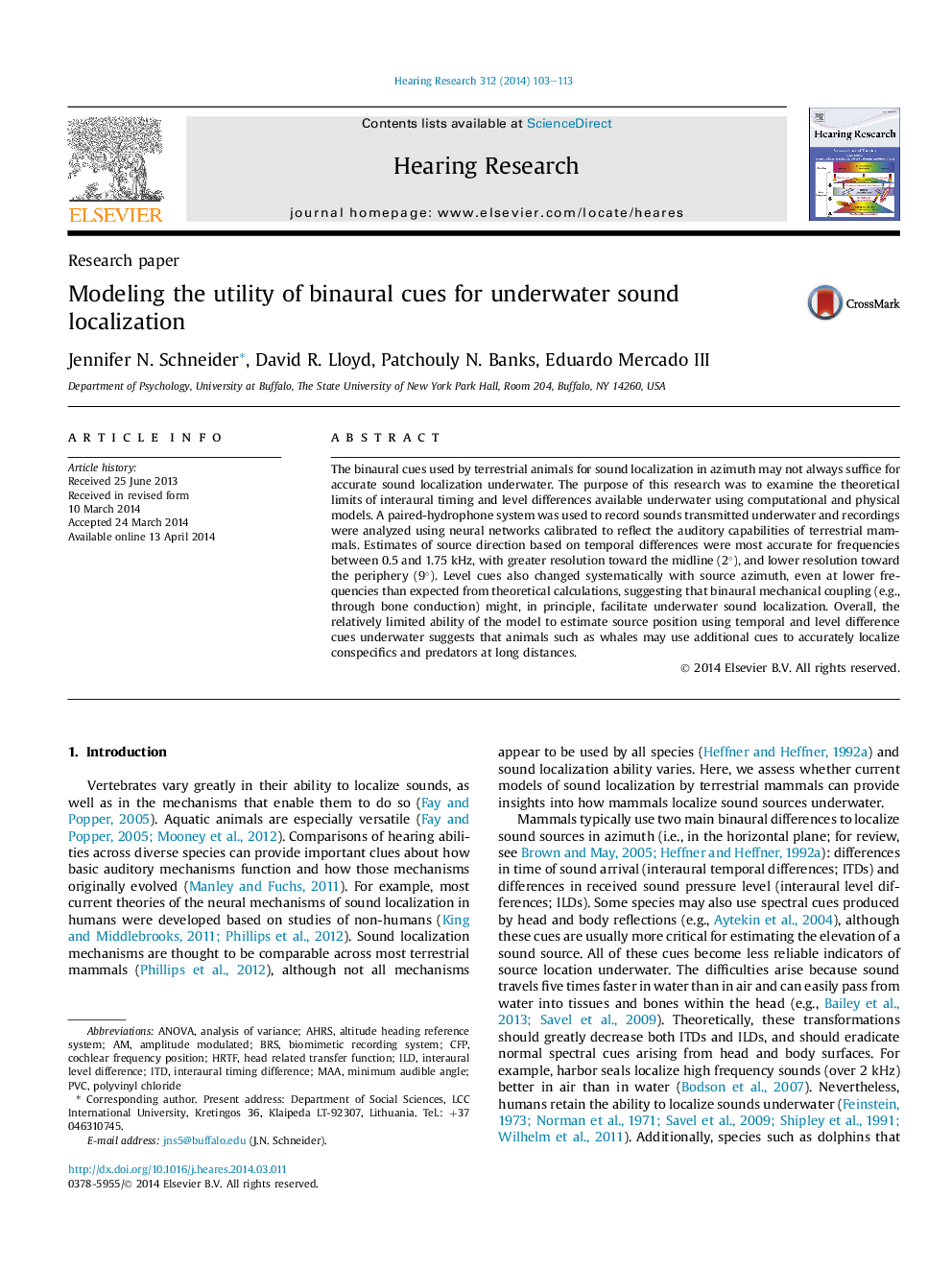| Article ID | Journal | Published Year | Pages | File Type |
|---|---|---|---|---|
| 6287402 | Hearing Research | 2014 | 11 Pages |
Abstract
The binaural cues used by terrestrial animals for sound localization in azimuth may not always suffice for accurate sound localization underwater. The purpose of this research was to examine the theoretical limits of interaural timing and level differences available underwater using computational and physical models. A paired-hydrophone system was used to record sounds transmitted underwater and recordings were analyzed using neural networks calibrated to reflect the auditory capabilities of terrestrial mammals. Estimates of source direction based on temporal differences were most accurate for frequencies between 0.5 and 1.75 kHz, with greater resolution toward the midline (2°), and lower resolution toward the periphery (9°). Level cues also changed systematically with source azimuth, even at lower frequencies than expected from theoretical calculations, suggesting that binaural mechanical coupling (e.g., through bone conduction) might, in principle, facilitate underwater sound localization. Overall, the relatively limited ability of the model to estimate source position using temporal and level difference cues underwater suggests that animals such as whales may use additional cues to accurately localize conspecifics and predators at long distances.
Keywords
Related Topics
Life Sciences
Neuroscience
Sensory Systems
Authors
Jennifer N. Schneider, David R. Lloyd, Patchouly N. Banks, Eduardo III,
